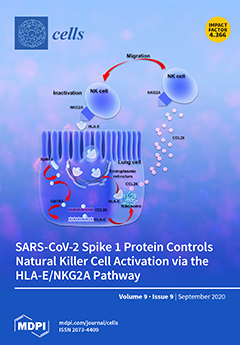Open AccessFeature PaperArticle
Neutrophil Extracellular Traps Promote the Development and Growth of Human Salivary Stones
by
Mirco Schapher, Michael Koch, Daniela Weidner, Michael Scholz, Stefan Wirtz, Aparna Mahajan, Irmgard Herrmann, Jeeshan Singh, Jasmin Knopf, Moritz Leppkes, Christine Schauer, Anika Grüneboom, Christoph Alexiou, Georg Schett, Heinrich Iro, Luis E. Muñoz and Martin Herrmann
Cited by 23 | Viewed by 3279
Abstract
Salivary gland stones, or sialoliths, are the most common cause of the obstruction of salivary glands. The mechanism behind the formation of sialoliths has been elusive. Symptomatic sialolithiasis has a prevalence of 0.45% in the general population, is characterized by recurrent painful periprandial
[...] Read more.
Salivary gland stones, or sialoliths, are the most common cause of the obstruction of salivary glands. The mechanism behind the formation of sialoliths has been elusive. Symptomatic sialolithiasis has a prevalence of 0.45% in the general population, is characterized by recurrent painful periprandial swelling of the affected gland, and often results in sialadenitis with the need for surgical intervention. Here, we show by the use of immunohistochemistry, immunofluorescence, computed tomography (CT) scans and reconstructions, special dye techniques, bacterial genotyping, and enzyme activity analyses that neutrophil extracellular traps (NETs) initiate the formation and growth of sialoliths in humans. The deposition of neutrophil granulocyte extracellular DNA around small crystals results in the dense aggregation of the latter, and the subsequent mineralization creates alternating layers of dense mineral, which are predominantly calcium salt deposits and DNA. The further agglomeration and appositional growth of these structures promotes the development of macroscopic sialoliths that finally occlude the efferent ducts of the salivary glands, causing clinical symptoms and salivary gland dysfunction. These findings provide an entirely novel insight into the mechanism of sialolithogenesis, in which an immune system-mediated response essentially participates in the physicochemical process of concrement formation and growth.
Full article
►▼
Show Figures






